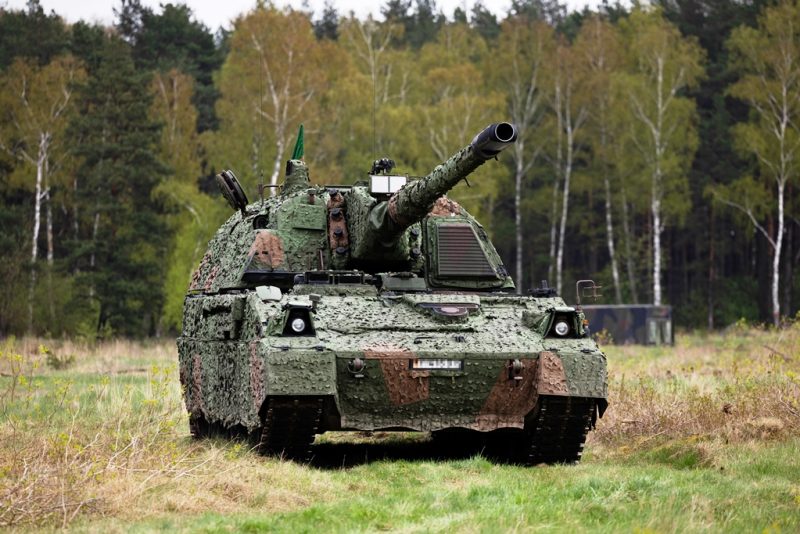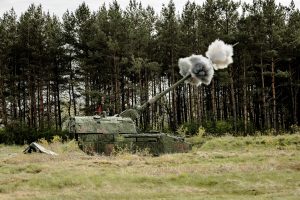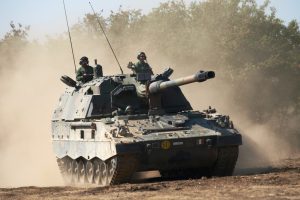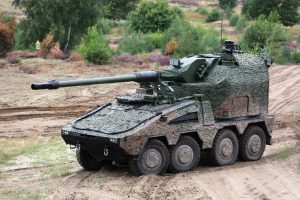KNDS Deutschland, where does the PzH 2000 go?
In the late 1990s, when it was first introduced in German Army artillery battalions, the Panzerhaubitze 2000, PzH 2000 in short, was definitely the most modern indirect fire tube artillery system in service in Western countries and is still one of the best performing systems worldwide. Twenty-eight years later many countries are planning to start mid-life update (MLU) programmes, while band new self-propelled howitzers are being produced for the Bundeswehr and Ukraine
In fact, along the years the PzH 2000 received some upgrades, the most recent acquisitions having some difference compared to the very first howitzers delivered to the launch customer, the German Army. The first prototype to be rolled out in 1998 came from the OEM Wegmann GmbH & Co. KG (in 1999 this merged with Krauss-Maffei Wehrtechnik to become KMW GmbH & Co.KG, nowadays KNDS Deutschland GmbH & Co. KG) plant in Kassel what is now called the PzH 2000 A0. This configuration was never sold or delivered to any customer, and remained a development item.
The basic PzH 2000 is therefore the A1, which was delivered in numbers to the Bundeswehr. Compared to the A0 the A1 had an enhanced navigation system and was more accurate, most of this improvement coming from an optimised pneumatic barrel laying system, EDR On-Line understood. A further step was made when production switched to the A2 configuration, which included some advancements, such as a new cooling system for charges, and was delivered to e.g. the Netherlands.
Most of the PzH 2000 in service today are A1s or A2s; this also because the A3 configuration remained on paper, or better saying, on computer screens. The main improvement was an increased protection against mines; it was proposed to Germany, but budget reasons, as well as the fact that artillery was for over a decade the victim of the new mission for many Western armed forces, operations other than war, prevented the Bundeswehr from adopting it.
With the A4 we come to the current standard, new howitzers destined to Germany and Ukraine being at that production configuration. It is to note that the A3 improvement is not part of the A4 configuration, which is mostly centred on electronics.
Many of the improvements come not only from advances in technology, in many cases linked to armies digitisation programmes, but also from lessons learned, from operations in Afghanistan, where both Germany and the Netherlands deployed some PzH 2000, and mostly from operations in Ukraine, the Ukrainian Army having received the first 12 howitzers of this type in June 2022, seven from Germany and five from the Netherlands their number being on the increase, some of them being currently produced. This last conflict demonstrated since inception that in a peer-to-peer conflict artillery is far from being irrelevant, which not only brought many countries to consider upgrading their fleets of artillery system, among which the PzH 2000, but also to increase the numbers of tube and rocket indirect fire support systems.
KNDS Deutschland is the prime in the PzH 2000 production scheme, Rheinmetall providing the chassis, gun and ammunition. Currently PzH 2000 A4s are being produced for Germany [1] and Ukraine. First deliveries to Germany are expected in late 2025, production lasting until early 2027 with contracts already signed.
The PzH 2000 A4 upgrade compared to A2 is mostly in the electronics area. One of the main steps forward is the adoption of a new fire control computer, the Centurion (from KNDS Deutschland Mission Electronics), which is replacing the MICMOS, provided by then EADS, now Hensoldt, used in the older versions. The MICMOS was based on 1980/90s technology, the Centurion having a much higher computing power. The SP howitzer electronics architecture was improved, the A4 remaining however an analog/digital weapon system. Another step forward is the integration of the Vulcano programming system into the howitzer; Germany acquired Vulcano 155 mm ammunition, the long-range/guided munition developed by Leonardo, Diehl Defence providing the semi-active laser seeker for the SAL version. Power generation was also considered, as today platforms tend to have an increasing number of subsystems installed, some of them quite power hungry.
While the A4 is under production, EDR On-Line understanding that in late September the final configuration was very close to be frozen, KNDS Deutschland is working on the A5 standard, will be the German Army MLU standard and should become reality in less than three years’ time.
EDR On-Line understood that the PzH 2000 A5 upgrade will have a core capability common to all customers, with some optional elements that each nation might decide to adopt or not.
The core of the programme aims at transform the self-propelled howitzer in a full-digital system with a semi-open electronic architecture. It will maintain the new Centurion fire control computer from the A4, however this will be plugged into a new full-digital electronic architecture, that will allow a much easier integration of new subsystems, should the need arise, as well as a much greater flexibility should some foreign customers adopt the A5 with different subsystems, thanks to standardised electronic interfaces. New sensors will be adopted, the ammunition autoloader will be improved as well as the gun laying system, a two slip ring solution being also adopted for the turret to cope with the new ammunition handling system, while the fuse programming station adopted on the A4 will remain.
Among optional upgrades we find a new driver indirect vision system, new high definition optronics, a portable fuse programming station, and the three-person crew concept, something which is generating considerable discussions also in the main battle tank community. Currently the five-man crew is maintained to allow the howitzer to be fired even in degraded mode, should for example the autoloader fail; in perspective adding the capacity to operate in degraded mode with only three crew members is being considered. Another option is the adoption of a remotely controlled weapon station; it is hard to imagine this being a fixed item, its positioning obviously being on top of the PzH turret, as it would exceed the allowed dimensions for railway transport. The PzH turret architecture does not allow a sliding solution such as that adopted by KNDS Deutschland on its RCH 155, therefore other ideas are being debated between the company and the military.
Protection is another issue; when the PzH was originally designed, emphasis was put on top-attack threats, the main one considered being 30×165 mm ammunitions fired from GSh-30 cannons fitted to Mil Mi-24 Warsaw Pact attack helicopters. This also led to host the ammunition well inside the howitzer chassis and not in the turret, all this having shown its effectiveness on Ukrainian battlefields. According to Ukrainian sources, a PzH was hit by four Russian drones, which neutralised its firing capacity, however the vehicle was able to withdraw without casualties. This does not mean that news modular solutions are not being considered, but apparently this is not the top priority.
As already discussed, power generation is an issue. Currently the PzH 2000 has a combined generator and cooling system. Considering mass and volume reduction of those items, KNDS Deutschland is proposing to split the two functions, installing in the same volume two independent and much more capable units.
Three nations are considering the A5 MLU, these being Germany, the Netherlands and Lithuania, which are cooperating to request an offer from KNDS Deutschland. The company awaits the request to be filed within year end or early next year. In the end those who fields the A4 will upgrade also those howitzers, however older ones will be the first to undergo the MLU.
Four more NATO nations, Italy, Croatia, Hungary and Greece, expressed an interest in the A5 MLU, Italy having the second largest fleet of PzH 2000 after Germany. Talks already started with the latter nation, an option for a two-phase upgrade that might being the howitzers at the A4 standard and later on to the A5 one being considered. This would allow to solve availability issues.
Finally, according to some information that appeared on the German press, the Bundeswehr intends to buy a “three digit number” of newly built PzH 2000 A5. Which means that the SP howitzer assembly line might remain open well into the 2030s, considering MLUs and new constructions. The PzH 2000 history is far from being concluded.
[1] On 30 March 2023 the German BAAINBw announced the acquisition of 10 new PzH 2000, as a replacement for those delivered to Ukraine, with an option for 18 more howitzers.
Photos by Bundeswehr/C. Kassette and P. Valpolini










